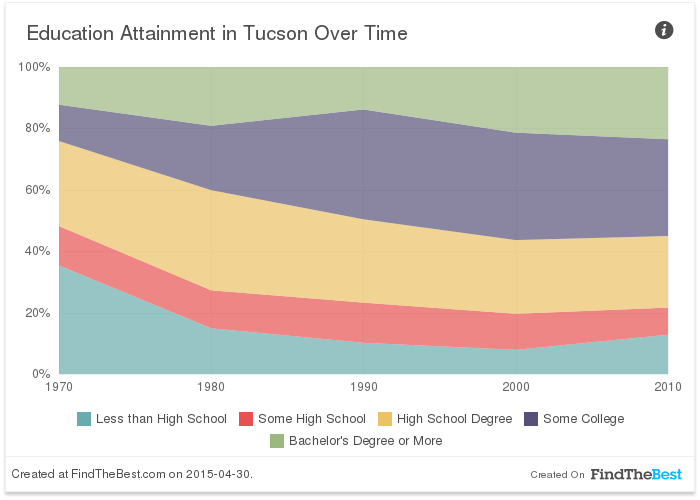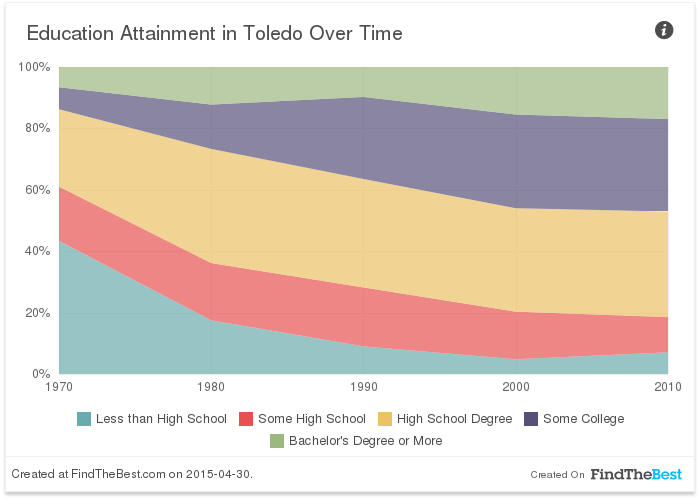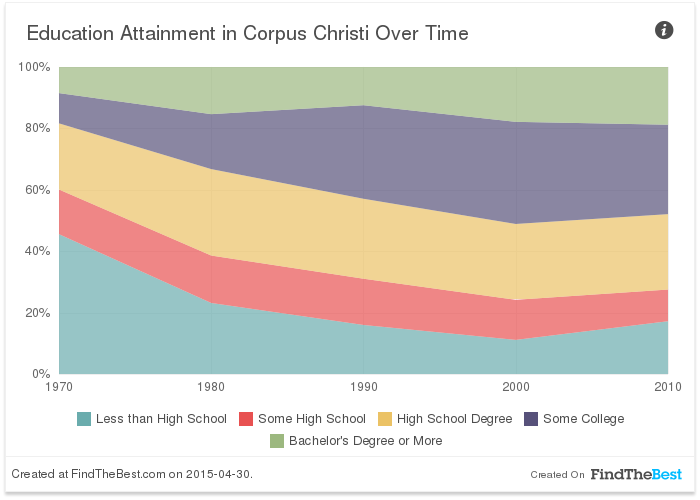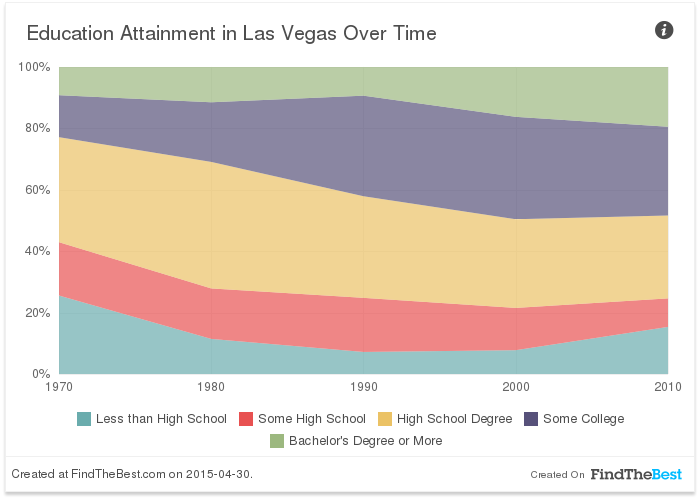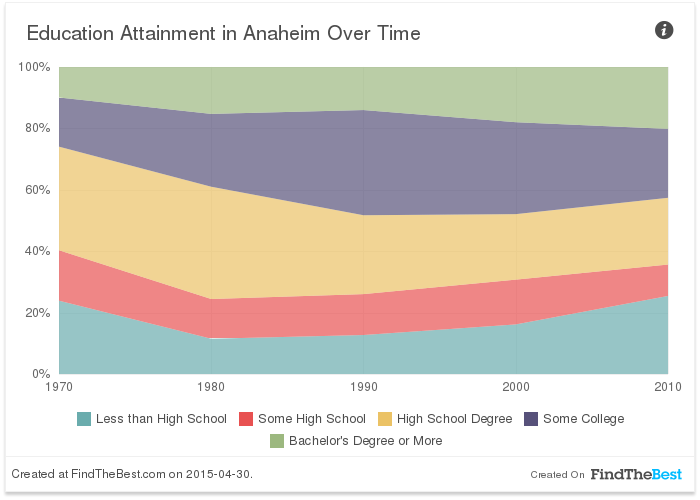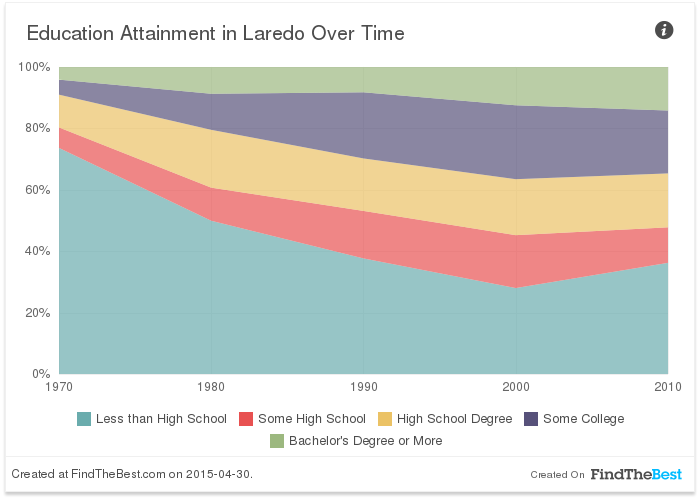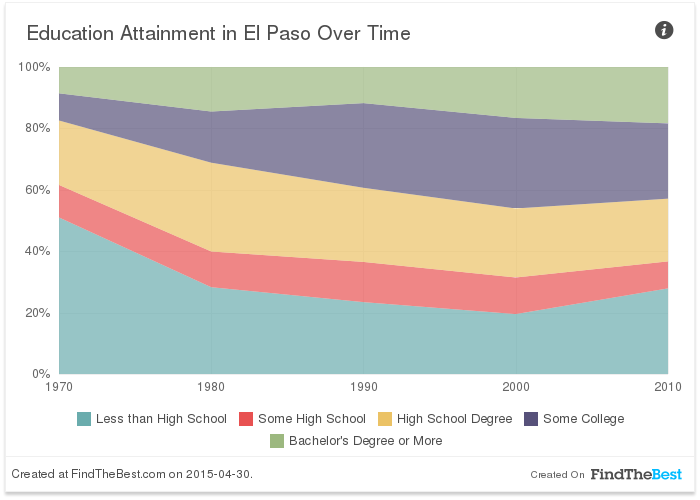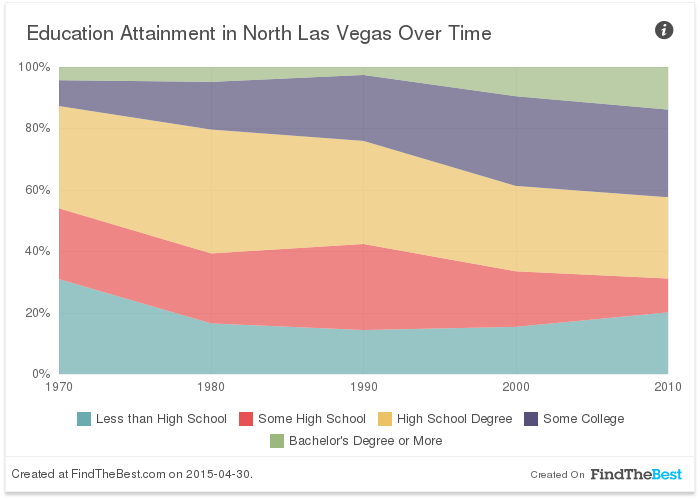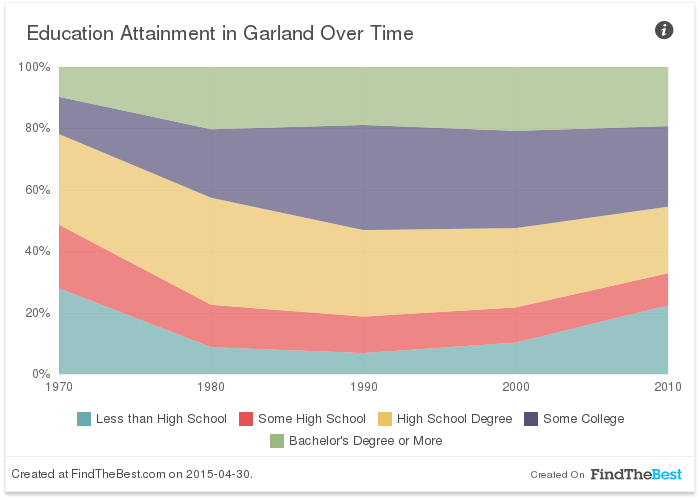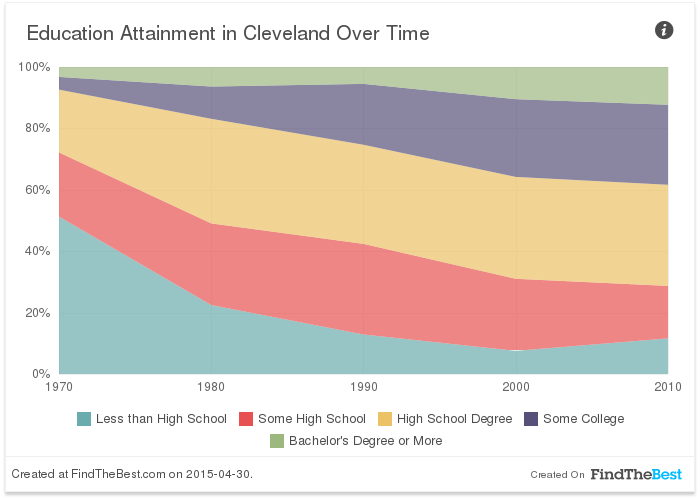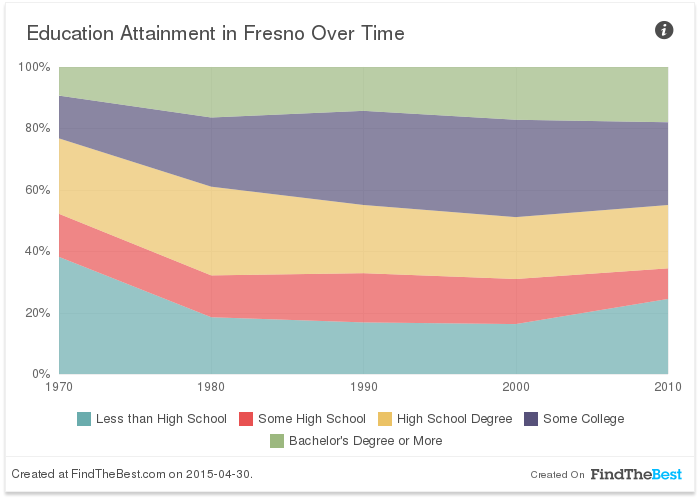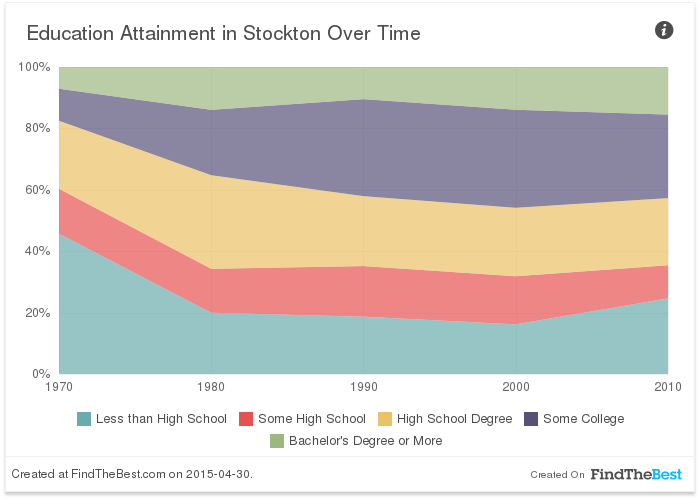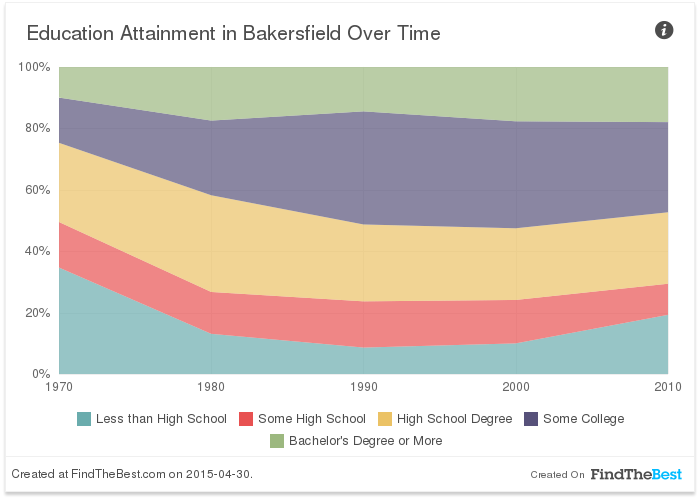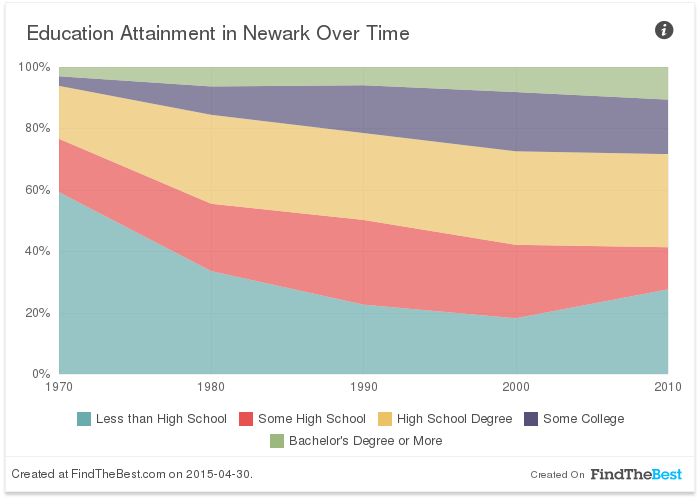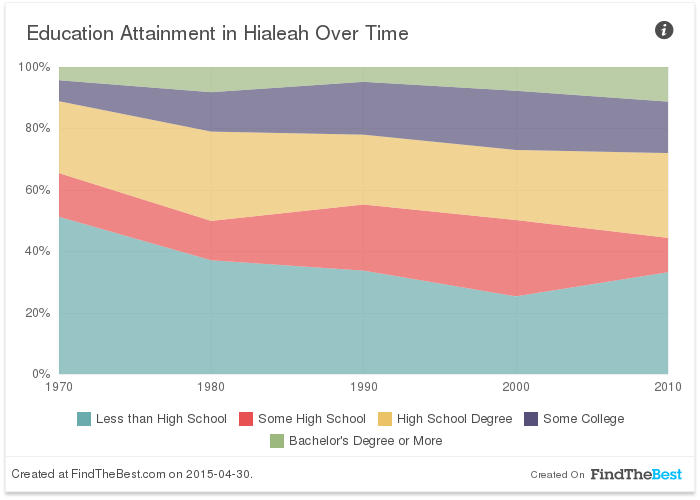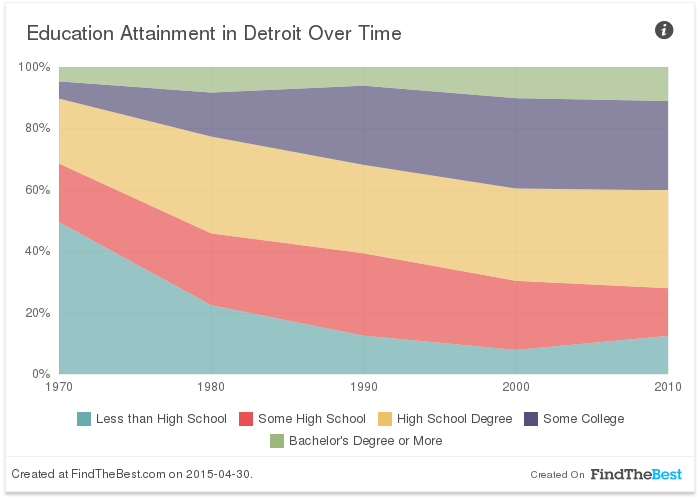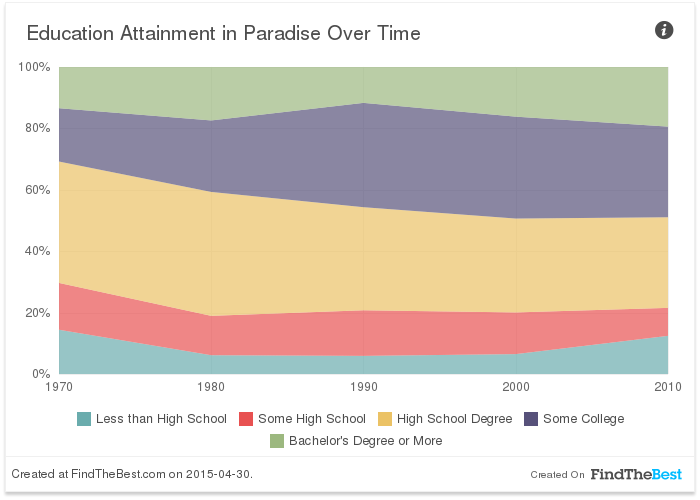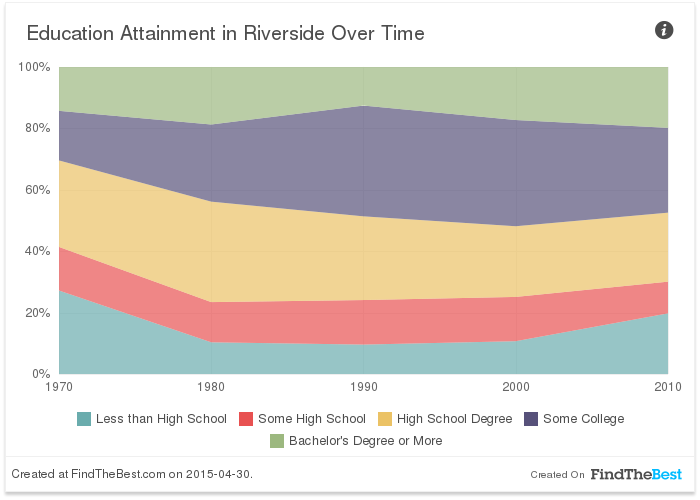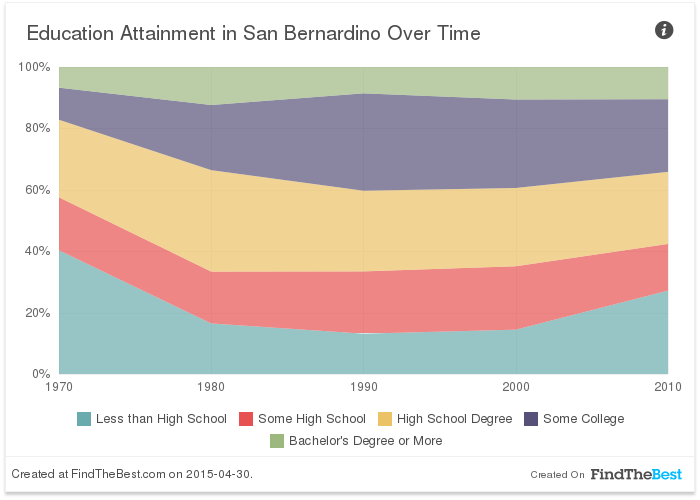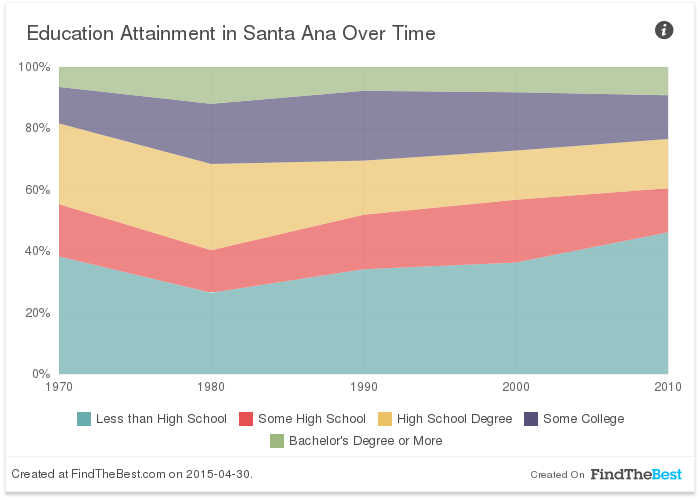As a whole, the United States has made tremendous educational progress.
In 1940, more than three in four Americans did not even attend high school. Today, four out of five Americans have high school degrees, while 25% have obtained a bachelor’s degree.
Unfortunately, the same trend doesn’t hold for every big American city.
We looked at the 100 most populous cities in the United States and ranked them by educational progress over time. Specifically, we ordered the list by change in bachelor’s degree attainment since 1970.
Just when the nation was accelerating educationally, these 20 cities were slowing or stalling. The data comes from the United States Census Bureau, and all numbers apply to American residents over the age of 25.
Keep in mind that this list is ranked according to progress over time, not how well the city is doing today. Some reasonably well-educated cities will show up on this list, simply because they haven’t improved much over four decades.
Key Takeaways on “Worst Schools in America”
- Despite historical educational improvements nationwide, specific cities exhibit minimal progress in educational attainment since 1970.
- Cities like Santa Ana, San Bernardino, and Detroit struggle with educational advancements, particularly in higher education achievements.
- The analysis underscores a pressing need for targeted educational reforms in cities lagging behind national progress trends.
Short List: The 5 Worst Educational Progress in U.S. Cities
Here’s a quick rundown of U.S. cities that have shown the least educational progress over the years:
- Santa Ana, CA: Stagnation in high school and college-level educational attainment.
- San Bernardino, CA: Educational outcomes have worsened since the 1980s.
- Detroit, MI: Despite some improvements in high school diploma attainment, the city still lags significantly in college degree attainment.
- Bakersfield, CA: A decline in residents with some college education since 2000.
- Hialeah, FL: Minimal improvement in educational attainment levels over the past three decades.
Tucson, AZ
Tucson has shown decent educational progress since 1970, and today, the city lags only slightly behind the nation as a whole. Still, the city’s slow pace leaves it among the bottom 20.
Toledo, OH
Toledo has shown notable improvements in high school degrees. Today, just 7.1% of residents over 25 never attended high school (compared to over 43% in 1970). Unfortunately, the city has made little progress with college degrees.
Corpus Christi, TX
Similar to Tucson, Corpus Christi has made some progress, but it lags behind the nation’s pace in every category.
Las Vegas, NV
Since 1990, Las Vegas has seen a slow but steady increase in college graduates. Unfortunately, the number of residents without a single year of high school has also grown since that time.
Anaheim, CA
Anaheim was hitting its stride in 1980, with nearly 90% of residents having attended at least some high school, and nearly 80% having secured a high school degree. Unfortunately, those numbers went on to decrease over the next two decades, dropping Anaheim in the rankings.
Laredo, TX
By 2010 stats alone, Laredo is one of the least educated big cities in America. That said, Laredo has made significant progress since 1970, when nearly 80% of residents over 25 had not attended high school.
El Paso, TX
El Paso’s stats have remained stubbornly flat since 1980. The city remains uneducated relative to the nation.
North Las Vegas, NV
Residents of North Las Vegas were among the least educated—in terms of bachelor’s degrees—in 1990. Steady progress since then keeps the city from earning an even lower ranking.
Garland, TX
Conversely, Garland was far outpacing the nation in 1980, only to flatten out through 2000 (and even lose a bit of ground from 2000 to 2010).
Cleveland, OH
Cleveland has shown somewhat respectable growth at the high school level, and today, more than one in four residents have attended at least some college. Bachelor’s degree attainment, however, remains low.
Fresno, CA
Since 1980, Fresno’s educational progress has remained strikingly flat, with little to no improvements across most education levels.
Stockton, CA
Similar to Fresno, Stockton showed encouraging signs between 1970 and 1980, only to stall out for the next three decades.
Bakersfield, CA
From 1990 to 2000, half of all Bakersfield residents had at least some college on their resume, a number that has fallen below 50% since then.
Newark, NJ
Newark has shown respectable progress at the high school level, routinely increasing the proportion of residents with diplomas from decade to decade. Unfortunately, growth on the college degree level has been anemic by comparison.
Hialeah, FL
Today, one in three Hialeah residents never went to high school, while only 11% have a bachelor’s degree. Unfortunately, this isn’t much better than where the city was three decades ago.
Detroit, MI
It’s often easy to criticize Detroit on its education and economy, but to the city’s credit, high school diploma attainment has grown tremendously since 1970, and more residents than ever are attending at least some college. The city still falls woefully short on four-year college degrees, however, which earns the city a bottom-five finish.
Paradise, NV
Just south of Las Vegas, Paradise is similar to its northern cousin: some progress between 1970 and 1980, followed by three decades of little to no change.
Riverside, CA
Riverside falls just slightly behind the nation in each category. Considering that the city boasted nearly identical stats in 1970, however, it loses major points for lack of progress.
San Bernardino, CA
Not only has San Bernardino stalled out since the 80s, but momentum seems to have reversed. In 2010, overall educational attainment was objectively worse than it was three decades earlier.
Santa Ana, CA
With stagnant college-level statistics, Santa Ana was already a strong candidate for America’s least educationally progressive city. But the city’s high school numbers have actually decreased since 1970—a rare feat that seals Santa Ana’s ranking as America’s most educationally sluggish city.
Wrapping Up: The Educational System Needs a Reform
The educational progress in U.S. cities varies significantly, with some cities like Santa Ana, San Bernardino, and Detroit facing considerable challenges in improving educational outcomes.
Despite national trends showing increased high school and college degree attainment, these cities have seen either stagnation or even regression in educational achievements. Addressing these disparities is crucial for fostering better opportunities and ensuring that all cities can contribute to and benefit from the nation’s educational progress.
Educational reforms tailored to the unique needs of these lagging cities could play a pivotal role in reversing these trends and promoting more equitable educational outcomes across the country.


